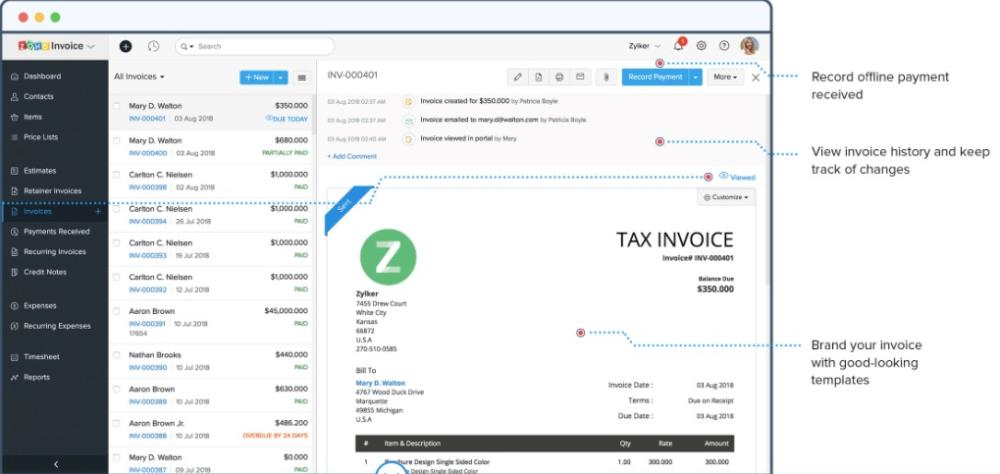
Zoho Invoice is a powerful tool that has been consistently gaining market share because it lets you send professional invoices, automate payment reminders, and accept card payments online, faster than ever! but what really sets Zoho Invoice apart is a large number of features it offers vs its main competitors not to mention the price. Below are just a few features to highlight along with a detail list of comparative features vs Invoicera.
Brand your invoices
Choose a template from our gallery and give it a personal touch. Zoho Invoice lets you carefully craft your invoices to fit your brand.
Create multilingual and multicurrency invoices
Send invoices to your customers in their currency, make base currency adjustments, and easily analyze the revalued balances. Zoho Invoice is also multilingual and speaks 10 languages. (German, Spanish, French, Italian, Chinese, Dutch, Portuguese, Brazilian Portuguese, Swedish, Japanese)
Sign your invoices
Use your digital signature to prevent invoice forgery or tampering. Our Zoho Sign integration ensures the highest level of security, compliant with ESIGN and eIDAS e-signature laws.
Send your invoice by mail
Zoho Invoice professionally prints your invoices, seals them in envelopes and mails them to your customers for you.
Set invoices on autopilot
Set up a recurring billing profile, bill and charge your customers automatically.
Print and share invoice with ease
Create clones, print out a copy, or simply share invoice over email with your team and collaborate better.
Get real-time invoice reports
Run real-time reports on your sales, expenses and tax summary. You can also schedule key reports and receive them automatically by email.







